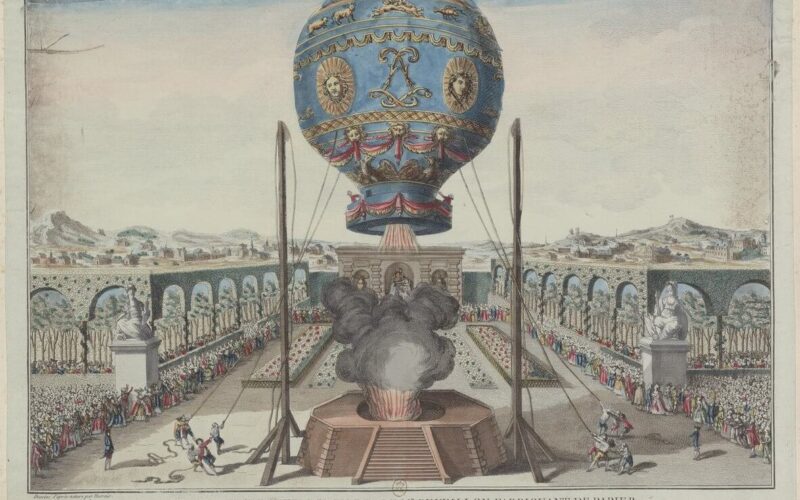Since Icarus, humanity has always jaloused birds for their ability to fly. On this day, 236 years ago, a major step was made towards conquering the sky, as the first manned flight in history took place, aboard a hot air balloon.
The two brothers Joseph and Étienne Montgolfier had experimented with hot air balloons several times that year. In April 1783, their first balloon took off from Annonay, in their home region of Ardeche, in southeastern France. The locals looked in awe at the balloon, as it rose by 1,000 meters of altitude and traveled over 3 kilometers. This first experiment attracted the attention of the French Royal Academy of Sciences, which invited the brothers in Paris.
On September 19, 1783, another hot air balloon was tested at the Palace of Versailles, in the presence of King Louis XVI and his court. This time, the balloon was designed to carry passengers. But the King had forbidden the scientist François Pilâtre de Rozier to risk his life by boarding the aircraft, as the effects of altitude on humans were still unknown.
Instead, the basket carried a sheep, a duck, and a rooster. They were the first air passengers of history, courageously paving the way for Laika. The balloon carried the animals over 1,700 meters from its place of departure and landed softly. Sadly, the rooster did not survive the journey.
On November 21, 1783, Pilâtre de Rozier and his assistant, the Marquis d’Arlandes, were finally authorized to carry out a manned flight.
Their aircraft was an aerostat of 13 meters in diameter, 21 meters high, made of cloth and paper. Hot air was produced by burning dry hay. In the courtyard of the château de La Muette, west of Paris, the two men took off, this time under the eyes of the Dauphin de France and his entourage, as well as several witnesses of the Royal Academy… including a certain Benjamin Franklin.
They reached 1,000 meters in altitude as they saw the streets of Paris like no man before, and landed on the Butte-aux-Cailles, a hill in the south of the city. For the first time in history, two men overcame gravity for more than twenty minutes. Their flight was considered a success.
A year later, Pilâtre de Rozier would try to cross the English Channel using another balloon, this time developed by the physicist Pierre-Ange Romain, which would also accompany him on his journey. However this time the aircraft crashed, making them the first two air victims.
Due to their hazardous nature, hot air balloons would fall out of fashion for centuries, replaced by gas balloons that do not require any fire during flight. Only with the emergence of nylon, and better control of the fire using liquid propane, were the hot air balloons able to make a comeback in the second half of the XXth century.

